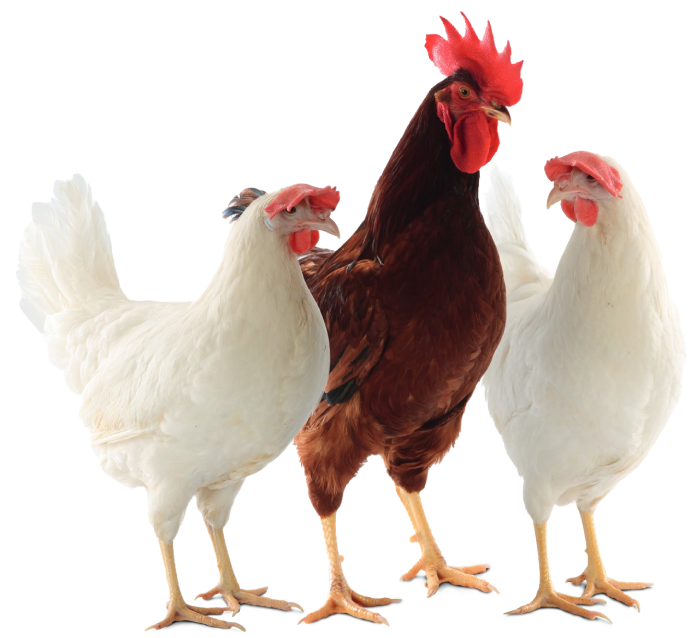However, in every generation the genetic potential is increasing through selection of the best individuals as parents of the next pureline generation.
The genetic progress is delivered with every new Grandparent- and Parentstock generation to our customers and therefore realised on the commercial level.
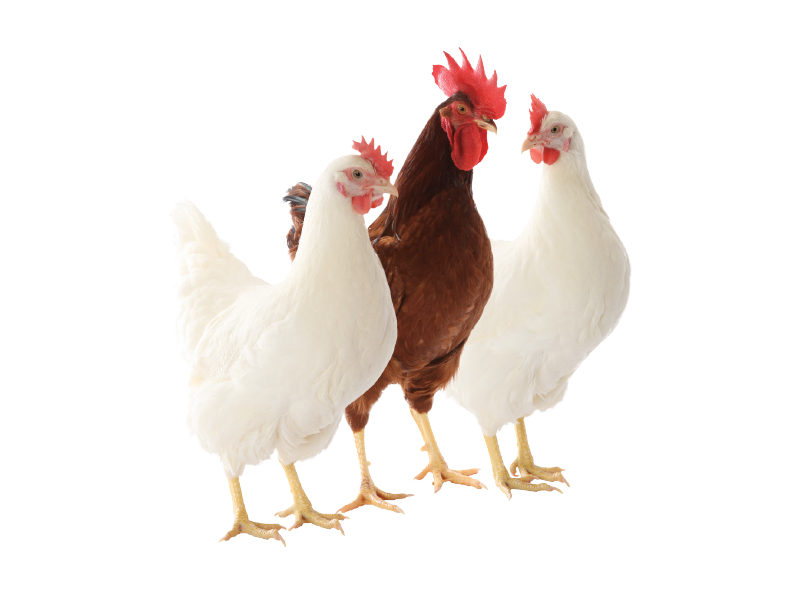
Since we do not change the performance standards every generation, the genetic and environmental progress have been accumulated for four years now. Therefore, recently the new performance standard levels have been adjusted and released since mid 2021.
Until the year 2008, LOHMANN had only breed standards for cage housing. But since that time, the cage free housing is becoming in an increasing number of countries not an “Alternative” but is now in most European countries the “Standard” housing system.
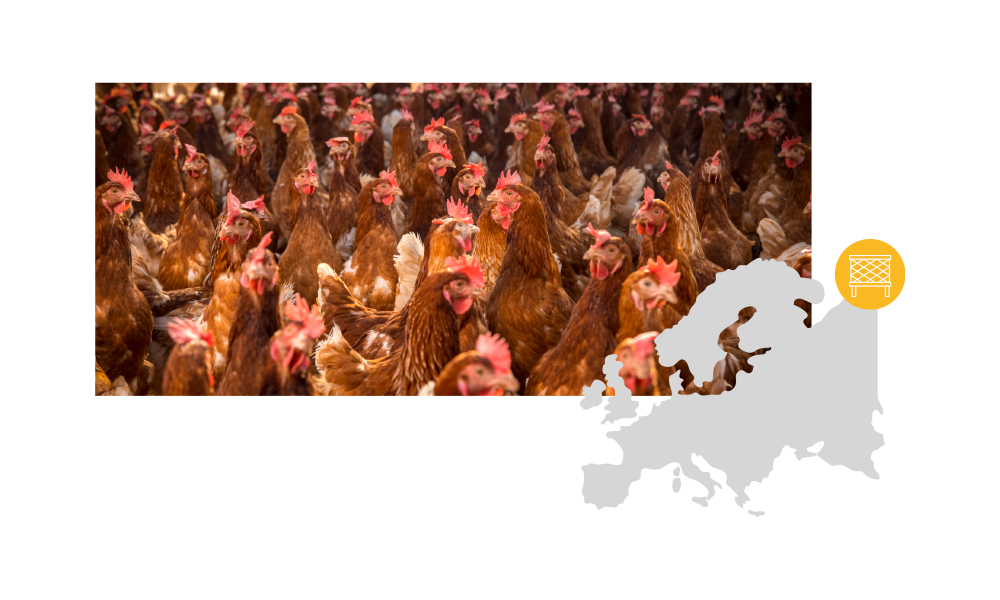
The major changes can be summarised for all standards:
- Due to improvement in persistency and higher increase in rate of lay at older ages.
- Extension of the cage free standards from 85 weeks to 90 weeks for all brown breeds and to 100 weeks for all white and tinted breeds.
- Now cage free standards start one week earlier, start in 19 weeks instead of 20 weeks with 10% rate of lay.
- More flat egg weight curve: same egg weight before 40 weeks of age, less increase in egg weight at older age to achieve the best persistency and a good shell stability at older age.
- No change in body weight (after the adjustment of body weight in 2018).
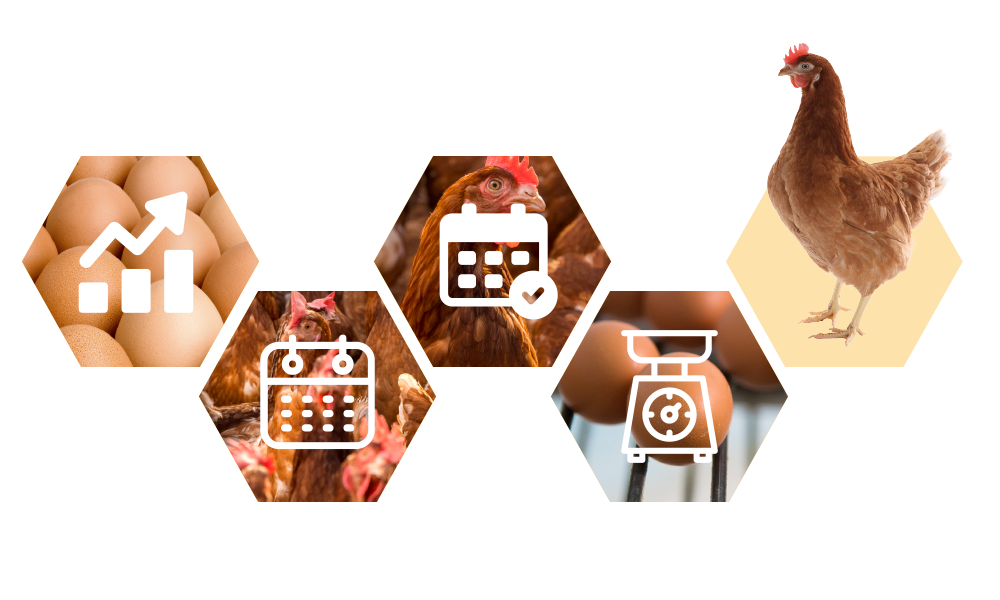
Improvement of persistency
Especially after 60 weeks of age, the laying performance of the hens has improved. This is the consequence of the top-ranking selection target of laying persistency and late shell quality.
The increased number of saleable eggs from a longer production cycle of a flock gives an economic advantage to the egg producer.
The cost for the pullet is distributed to a higher number of eggs and therefore the pullet costs per egg are reduced.

Under field conditions, more and more flocks show a longer production period and therefore the length of the cage free standards have been prolonged to 90 weeks for brown varieties and to 100 weeks for white varieties.
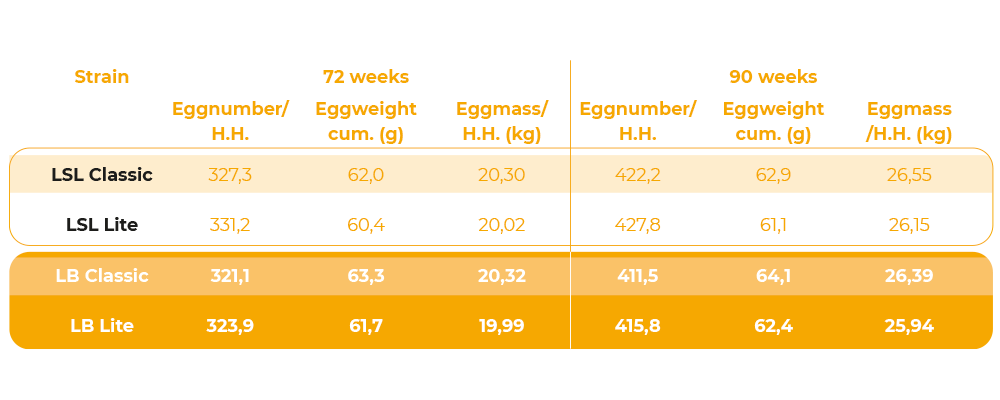
As an example, you can see from the next table the comparison of the old to the new standards for LSL CLASSIC in cage free housing. The egg number at 72 weeks has increased by 6.3 eggs. This increase comes from 2 components: better persistency and the one week earlier start of lay compared to the old standard.
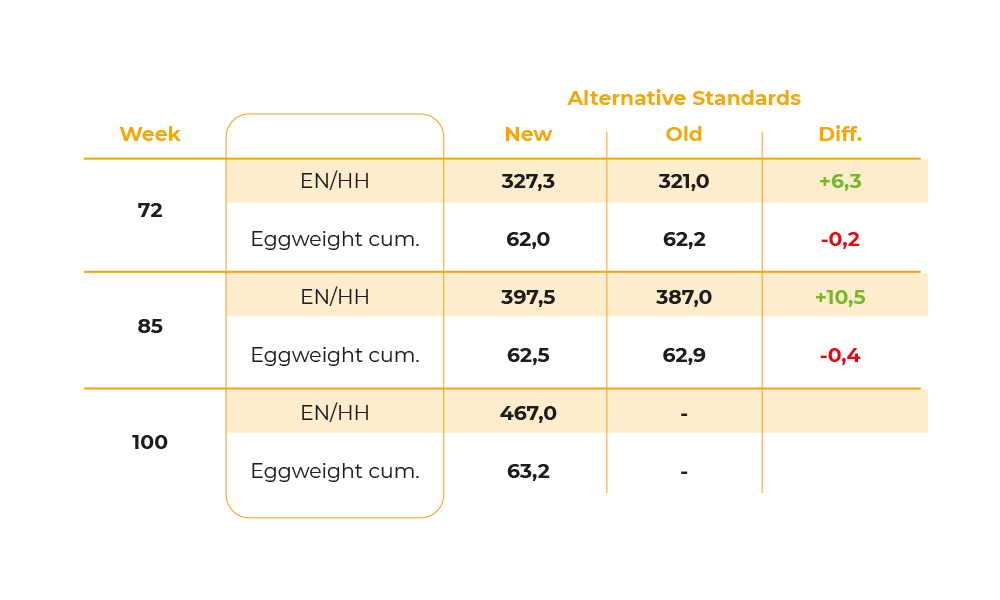
How to read the performance standards
The LOHMANN breed standards for both cages and alternative housing systems are created in a way, that the target values do not correspond to the maximum performance that can be reached. The maximum performance will only be achieved if always perfect conditions for the birds are provided. This is not realistic under “real live” field conditions.
Therefore, our standards are based on average field conditions and should be realistic and reachable under average management- and environmental conditions.
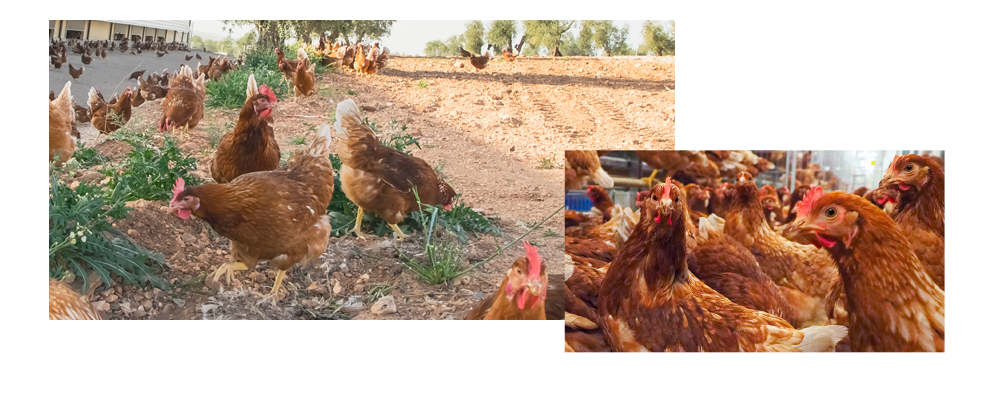
Genetic progress will continue
You can be sure that the genetic work in LOHMANN BREEDERS will continue to create genetic progress.
With investments in new breeding farms (Canada, Spain and Scotland), new technologies (genomic selection), new equipment (Transpondernest in Germany), challenge tests under difficult conditions (Challenge Sibtest in Russia) and continued testing of crossbred birds under field conditions in Russia, Spain and Columbia, the future of genetic progress is safeguarded and sustainable.
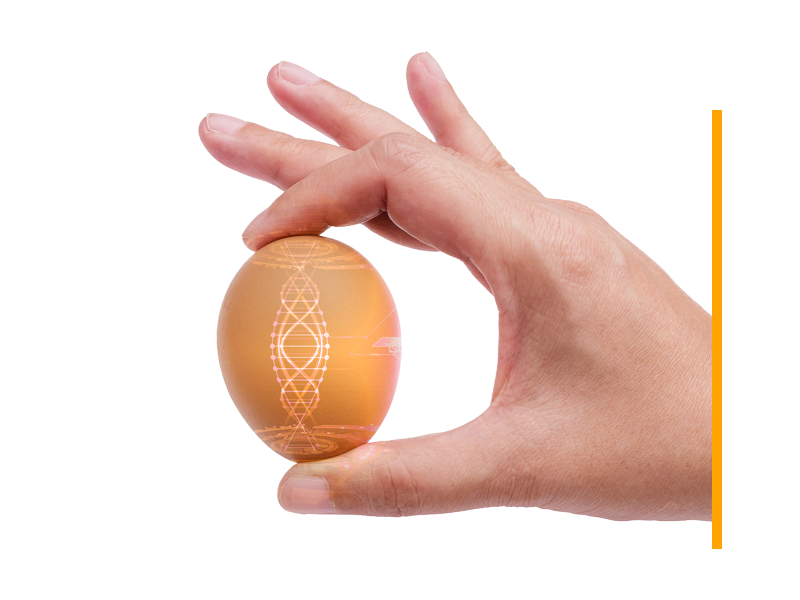
The progress is based not only on economic important traits like laying rate and feed conversion, but also in improved shell quality and livability.
After many generations of intense selection, the genetic parameters (heritability) are still showing a clear potential for further improvement.

Due to a careful management of the level of inbreeding, there are no negative signs, like inbreeding depression or reduced variability.
The biological limit of one egg per day is for sure reached during laying peak in high performing flocks but longer laying sequences still give potential for improved persistency with improved shell quality.
The testing period on the pureline birds was extended to over 100 weeks in one cycle.
